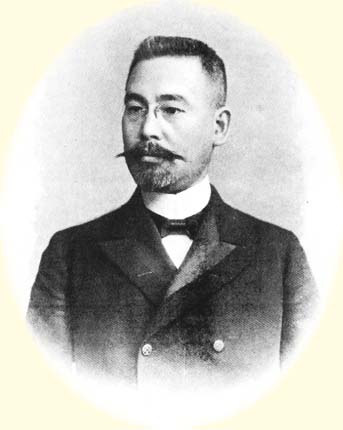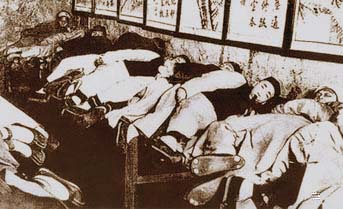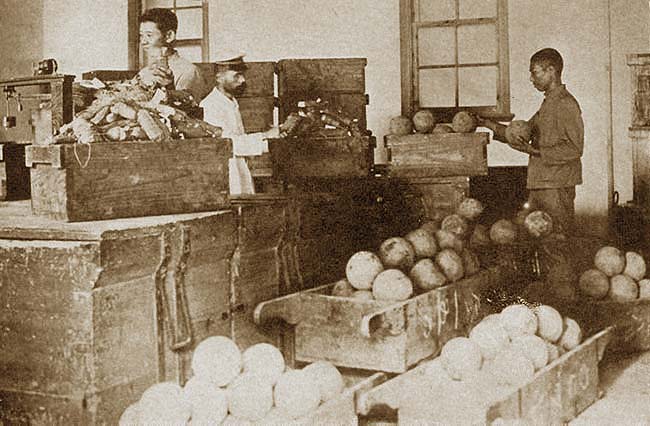|
||||||||
|
|
||||||||
|
The Japanese Imperial troops landed on the north-east coast of Formosa
(Taiwan) on 29 May 1895, and by 7 June had taken possession of Taipehfu
(Taipei). The troops had met shambolic, if sometimes brave, resistance
from the troops of the fledgling Republic of Taiwan. However, the
Japanese met a more concerted resistance as they moved south, and it was not
until 21 October 1895 that the troops took control of Tainanfu (Tainan),
then the main southern city. During this campaign a mere 164 Japanese
soldiers had been killed in battle, although 4,642 had died of disease;
the Chinese resistors by contrast had left 6,760 dead in the field.
Throughout 1896 there were scattered rebellions against the Japanese occupation, the most serious being centred on Chip-chip Hokto (Chi-chi of earthquake fame) which left 247 Japanese dead and was ruthlessly suppressed. Although bands of rebels and brigands would continue to trouble the Japanese forces, the island had been essentially pacified by the end of 1896 and the Japanese could begin to administer Formosa. |
||||||||
| The Japanese Formosan Bureau proposed three initial strategies to subjugate and administer the island. First, the strict prohibition of opium smoking. Second, the cutting off of the cue worn by many men. And thirdly, the outlawing of the custom of binding the feet of women. However the Japanese quickly realised that, whilst the two latter policies would effect only a comparatively few islanders, the first would impact a considerable number. |
|
|||||||
|
Baron (Shimpei) Goto Chief of Civil Administration on Formosa 1898-1906 |
The enlightened Baron Goto, who later became the Chief of Civil
Administration and played a huge role in the development of Formosa,
offered sage advice. Goto warned against an absolute prohibition as he
considered that almost every family on the island was affected to some
extent by the
opium habit. He counselled that a prohibition would not only create great
resentment among a restive people, but also would probably cause many families to flee to
China thus depleting the workforce.
Baron Goto suggested that the government itself should take up the manufacture and import of the drug and strictly control its sale. In this way, Goto suggested, the government could at first control the situation without enflaming the new subjects, and then set about ending the opium habit as soon as possible. |
|||||||
| The authorities accepted Baron Goto's advice and in January 1897 issued the Formosan Opium Regulations. Under these regulations an Opium Monopoly was set up to strictly control the import, manufacture, sale and consumption of the drug. Habitual smokers were obliged to apply for special licences in order to buy and smoke opium. These licences were only issued after the addict had undergone a medical examination to determine the degree of his addiction. | ||||||||
| By 1900, under Baron Goto's direction, there were 165,752 licensed opium smokers, comprising 6% of the population. Of these licensed smokers it can be estimated that around 5% were females. The 1900 records also show that there were some 1,107 licensed dispensaries of opium throughout the island. In the same year 438,812 lbs, or approximately 200,000 kg, were sold, with a value of around 4.6 million yen. This gross figure was equivalent to 20% of the Formosa Government's annual expenditure. |
A licensed opium den |
|||||||
| The Japanese authorities were naturally unprepared to meet the huge market demand for prepared opium, but they were quick to understand the revenue potential. In the beginning the authorities were obliged to rely upon the expertise of local Chinese refiners. However in 1897 Japanese engineers were dispatched to British India and Persia to study the cultivation and refining of opium, and plans were put underway to create some degree of self-sufficiency in opium supply through plantations in Formosa and especially in Korea. | ||||||||
|
Government Opium Factory in Taihoku |
In 1900 a new Government Opium Factory was completed in Taihoku and equipped with the latest facilities. In 1922 this factory was producing around 50,000 kg of prepared opium and 4,000 kg of morphine. The morphine production exceeded that of Japan itself and was set to double in the 1930s. However it should be noted that a further 22,000 kgs were imported into Japan in the same year. Much was destined to China. | |||||||
|
|
||||||||
|
||||||||




